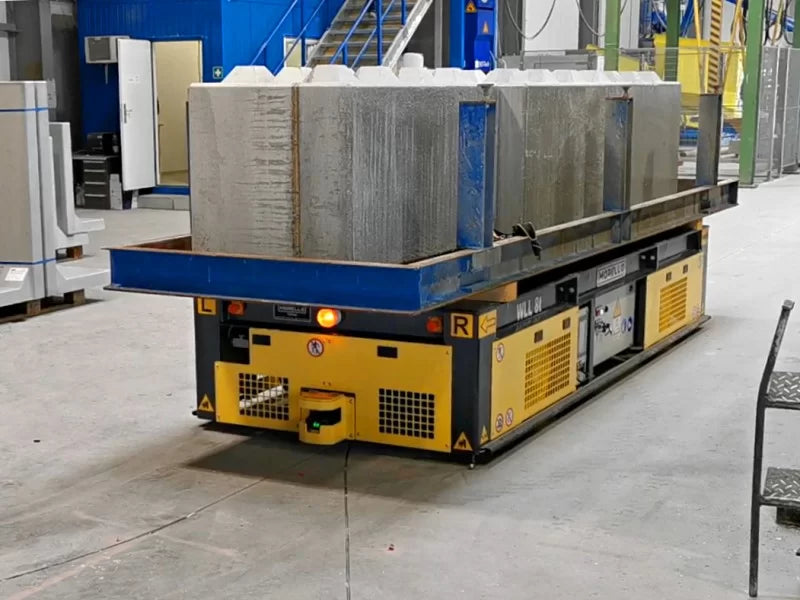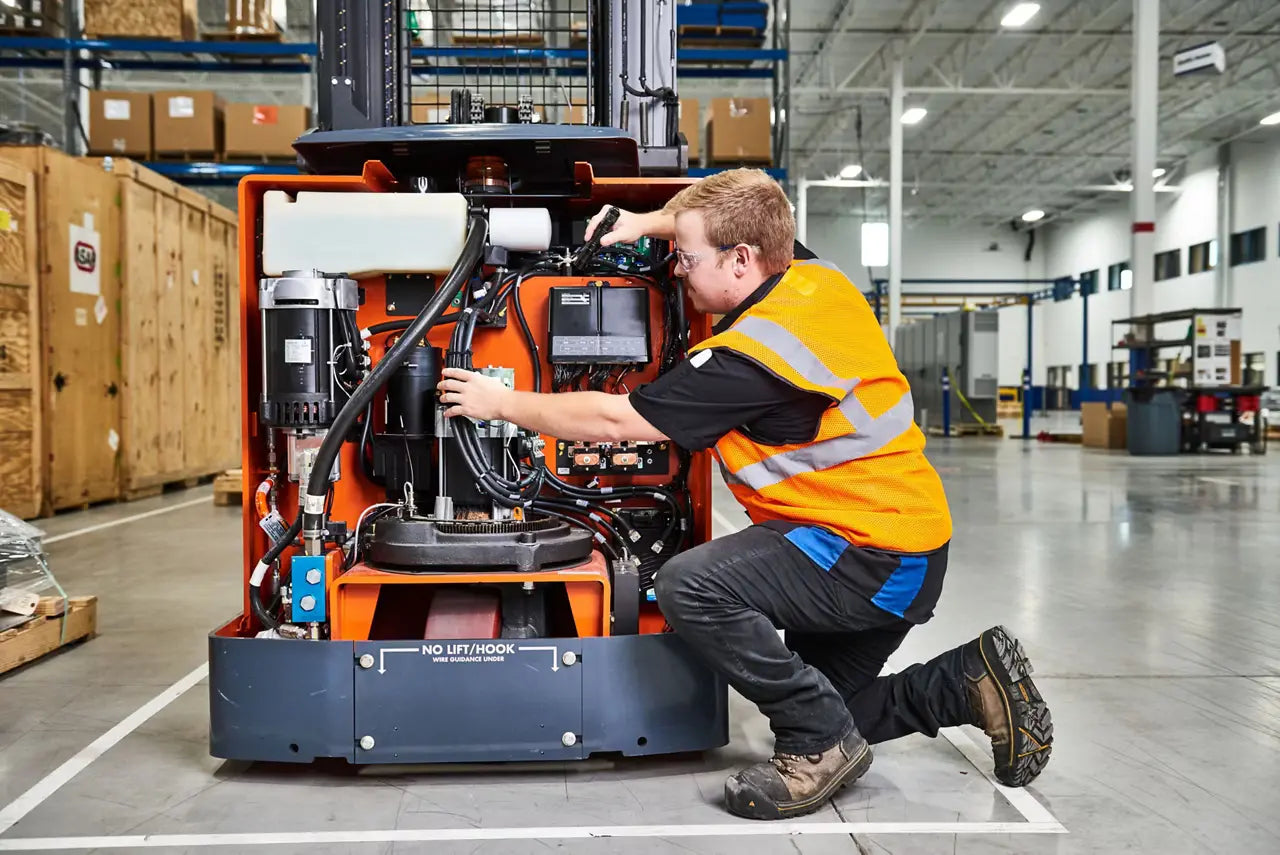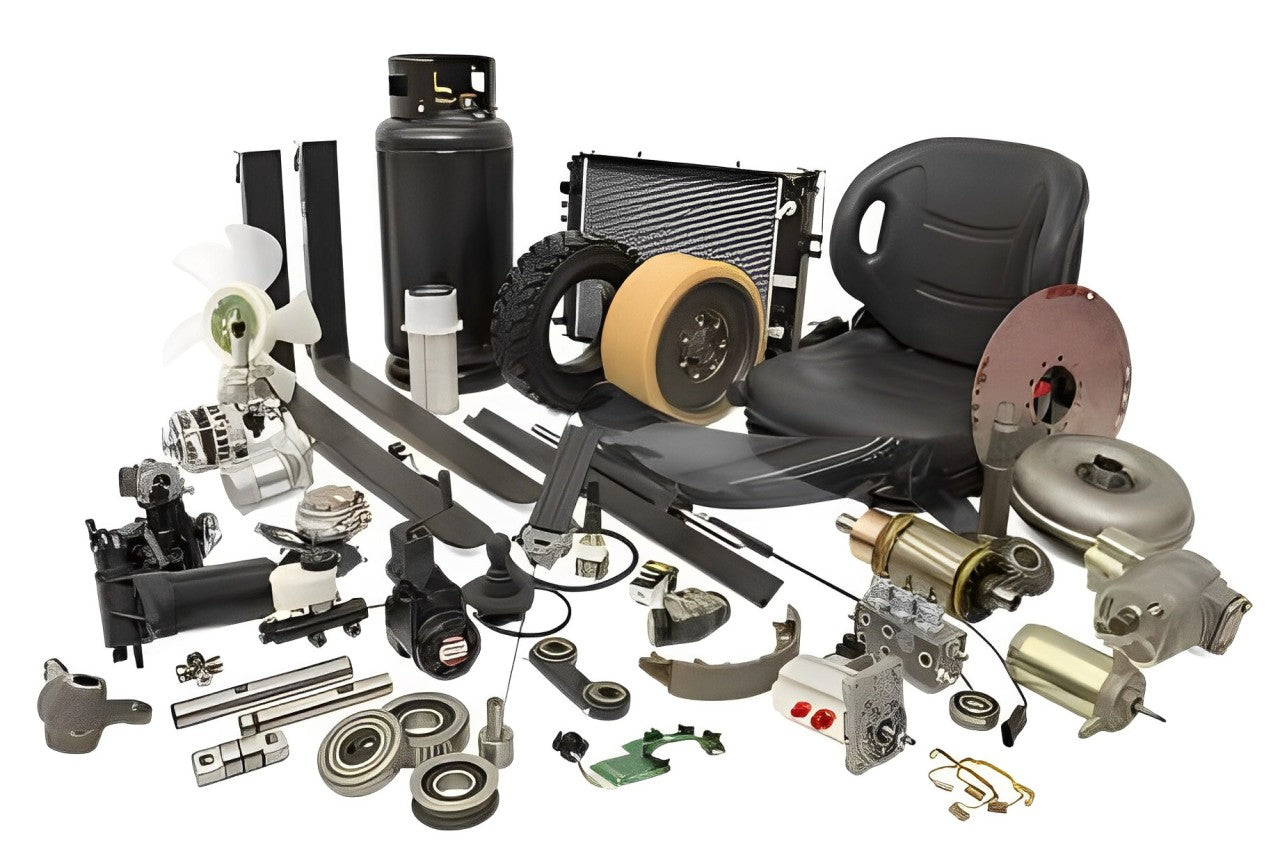Automated Guided Vehicles (AGVs) have become a game-changer in the fields of warehouse management, material handling, intralogistics, and manufacturing processes. By automating the transportation of goods within warehouses, factories, and distribution centers, AGVs have revolutionized the way materials and finished products are moved, stored, and managed. The advent of AGVs has played a crucial role in reducing labor costs, increasing operational efficiency, and improving safety standards. This article explores the transformative power of AGVs in modern warehouses, highlighting how these AI-powered vehicles are shaping the future of industrial processes.
1. Introduction to AGVs: The Rise of Automation in Warehousing
Automated Guided Vehicles (AGVs) are driverless robots or vehicles designed to transport materials, parts, or finished goods within a defined space, such as a warehouse or factory. These vehicles are equipped with advanced sensors, guidance systems, and AI algorithms that allow them to move along predefined paths or tracks, ensuring the accurate and efficient movement of items.
AGVs come in various shapes and sizes, depending on their intended application, ranging from small, nimble bots designed to transport lightweight goods to large, powerful vehicles capable of moving heavy pallets and loads. Some AGVs operate on fixed tracks or paths, while others use more advanced navigation technologies like lasers or GPS to move around dynamically. Regardless of the type, AGVs have become integral to modern intralogistics and material handling systems.
The adoption of AGVs has accelerated due to the increasing need for operational efficiency and cost optimization in warehouses and manufacturing facilities. AGVs offer several advantages over traditional, manual methods of moving materials, including the ability to operate 24/7 without fatigue, making them highly attractive in industries where demand fluctuations and labor shortages can impact productivity.
2. The Role of AGVs in Material Handling and Intralogistics
Material Handling with Precision and Efficiency
Material handling is a critical part of warehousing and manufacturing operations. It involves moving raw materials, work-in-progress items, and finished goods throughout a facility. In the past, this process relied heavily on human labor and manual forklifts, which came with limitations in terms of speed, accuracy, and cost. AGVs have transformed material handling by automating this process, enabling seamless movement of materials with higher efficiency and reduced risk of human error.
AGVs are capable of handling a wide range of materials, from small packages to large, heavy pallets. They are often equipped with specialized attachments such as forklifts, conveyor belts, or robotic arms to meet specific handling needs. Their ability to move materials precisely to designated locations within a warehouse or factory ensures that the flow of goods remains uninterrupted and efficient.
In particular, AGVs are widely used in just-in-time (JIT) manufacturing environments, where materials must be delivered to production lines at precise times to avoid bottlenecks. By automating material delivery, AGVs help manufacturers meet tight production schedules while minimizing inventory costs.
Streamlining Intralogistics
Intralogistics refers to the management of internal material flows within a warehouse or factory. AGVs play a vital role in optimizing intralogistics by automating the movement of goods within a facility. They transport items from one location to another, such as from a receiving dock to a storage area or from a warehouse to a shipping zone.
AGVs are particularly effective in large, complex warehouses where manual transportation can be time-consuming and error-prone. By following preprogrammed routes or dynamically adjusting their paths based on real-time data, AGVs ensure that goods are transported accurately and efficiently. This reduces the time it takes to move materials within a facility and minimizes the risk of damage or misplacement.
AGVs also enhance inventory management by working in conjunction with warehouse management systems (WMS). They can be integrated with software that tracks inventory levels and optimizes the placement and retrieval of goods. This level of automation ensures that items are stored in the most efficient locations, reducing travel time and enhancing the overall productivity of warehouse operations.

3. How AGVs Improve Efficiency in Warehouses
Reducing Labor Costs and Increasing Productivity
One of the most significant benefits of AGVs is their ability to reduce labor costs. Traditional warehouses and factories rely on human operators to move materials, which can be expensive, especially in regions where labor costs are high. AGVs, on the other hand, require no human intervention once they are programmed and deployed. This reduces the need for manual labor in material handling, allowing businesses to allocate their workforce to more complex and value-added tasks.
In addition to reducing labor costs, AGVs increase overall productivity by operating continuously without the need for breaks or shift changes. Unlike human workers, AGVs can work 24/7, which is especially valuable in industries that require constant production or fulfillment, such as e-commerce, automotive manufacturing, and food processing. The ability to operate around the clock enables companies to meet high demand while minimizing downtime.
Enhancing Speed and Accuracy
AGVs are designed to move materials quickly and accurately, which is essential in environments where timely deliveries are critical. By following predefined routes or using real-time navigation systems, AGVs ensure that materials are transported efficiently from one point to another without delays. Their speed and accuracy are further enhanced by advanced AI and machine learning algorithms, which enable AGVs to optimize their movements and avoid obstacles.
Accuracy is a key advantage of AGVs. Human operators can make mistakes when transporting materials, leading to misplaced goods, damaged products, or delays in production. AGVs eliminate these risks by precisely following programmed instructions, ensuring that items are delivered to the correct location every time. This level of accuracy is particularly important in industries such as pharmaceuticals or electronics, where the handling of materials requires strict attention to detail.
4. Improving Safety and Reducing Workplace Accidents
Safer Work Environments
Warehouse and factory environments can be hazardous, particularly when forklifts and other manual vehicles are used for material handling. Collisions, tip-overs, and accidents involving pedestrians are common safety concerns. AGVs significantly improve safety by reducing the reliance on human-operated vehicles and automating the transportation of goods.
AGVs are equipped with advanced sensors and cameras that allow them to detect obstacles, avoid collisions, and navigate around people and other equipment. This makes them inherently safer than traditional manual vehicles. By operating in a controlled manner and adhering to preprogrammed routes, AGVs minimize the risk of accidents and ensure a safer working environment for employees.
Compliance with Safety Standards
Many industries are subject to stringent safety regulations that govern the use of vehicles and equipment in the workplace. AGVs are designed to meet these standards, providing companies with a reliable way to comply with safety regulations. In addition, AGVs reduce the risk of human error, which is often a leading cause of workplace accidents. This not only protects employees but also helps companies avoid costly fines and downtime resulting from safety violations.
5. The Impact of AI on AGV Performance
AI-Driven Navigation and Optimization
Artificial intelligence (AI) is at the core of AGV functionality. AI-driven algorithms enable AGVs to navigate their environment autonomously, making real-time decisions based on sensor data and environmental inputs. This allows AGVs to optimize their routes, avoid obstacles, and adapt to changes in the warehouse or factory layout.
In addition to basic navigation, AI enables AGVs to learn from their experiences. Machine learning algorithms analyze data from previous operations to improve efficiency and reduce errors. For example, an AGV might learn to avoid certain routes during peak traffic times or adjust its speed to minimize energy consumption. This continuous learning process allows AGVs to become more efficient over time, further enhancing the overall productivity of the warehouse.
Integration with Warehouse Management Systems
AI also facilitates the integration of AGVs with warehouse management systems (WMS) and other software platforms. This integration enables real-time communication between AGVs and other systems, allowing for seamless coordination of material handling tasks. For example, a WMS might instruct an AGV to retrieve a specific item from storage and deliver it to a shipping dock. The AGV can then execute this task autonomously, updating the WMS in real time as the task is completed.
This level of integration not only streamlines warehouse operations but also provides valuable data for optimizing processes. By analyzing data from AGVs and other systems, warehouse managers can identify bottlenecks, optimize storage layouts, and improve overall efficiency.
6. The Future of AGVs in Warehouse Automation
Autonomous Mobile Robots (AMRs) and Beyond
While AGVs have already transformed the warehouse landscape, the future holds even more promise with the development of Autonomous Mobile Robots (AMRs). Unlike AGVs, which rely on fixed paths or tracks, AMRs use advanced AI and sensor technologies to navigate dynamically within a warehouse. This enables them to adapt to changing environments and operate in more flexible and complex settings.
The adoption of AMRs is expected to grow in the coming years as warehouses seek even greater levels of automation and efficiency. AMRs offer enhanced flexibility and scalability, making them ideal for warehouses with constantly changing layouts or operations.
AGVs in Industry 4.0
As part of the broader Industry 4.0 revolution, AGVs are becoming increasingly connected to other systems and technologies, such as the Internet of Things (IoT) and cloud computing. This connectivity enables real-time monitoring and control of AGVs, allowing for greater visibility into warehouse operations and more efficient decision-making.
In addition, AGVs are expected to play a key role in the development of fully autonomous factories, where machines and robots work together seamlessly to produce goods with minimal human intervention. This vision of the future will require even more sophisticated AI algorithms and advanced sensor technologies, but AGVs are already laying the groundwork for this transformation.
7. Conclusion: The Transformative Power of AGVs
Automated Guided Vehicles (AGVs) have fundamentally transformed warehouse management, material handling, and manufacturing processes. By automating the transportation of goods, AGVs have reduced labor costs, increased efficiency, and improved safety in warehouses and factories. Powered by AI and advanced navigation technologies, AGVs offer unprecedented levels of accuracy, productivity, and scalability.
As the adoption of AGVs continues to grow, their impact on industries such as manufacturing, logistics, and e-commerce will only become more pronounced. With the integration of AI, machine learning, and Industry 4.0 technologies, AGVs are poised to lead the next wave of innovation in warehouse automation, paving the way for a future where intelligent machines work seamlessly alongside humans to drive efficiency and productivity.




Leave a comment
This site is protected by hCaptcha and the hCaptcha Privacy Policy and Terms of Service apply.